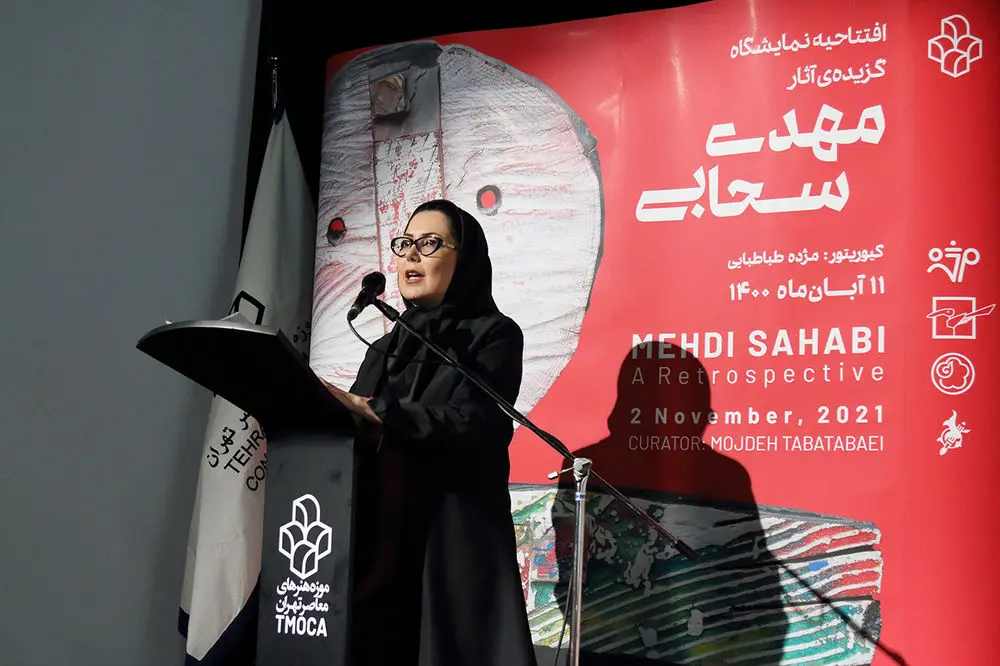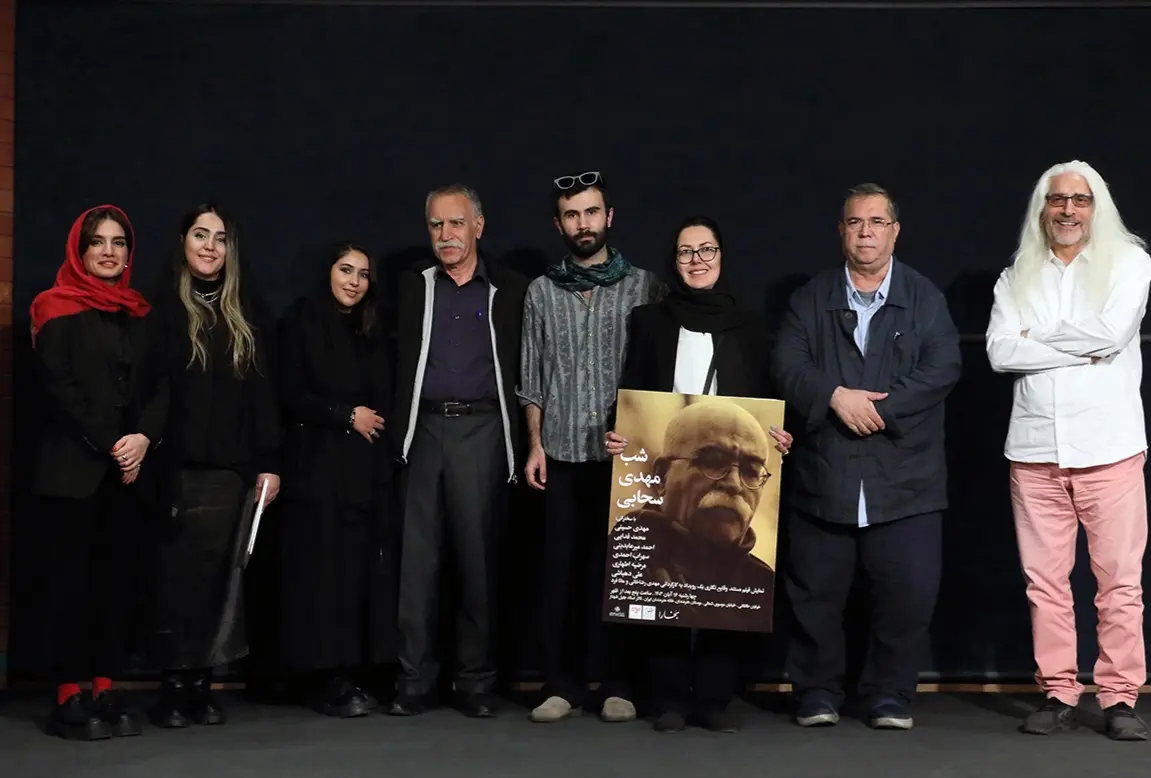
Mojdeh Tabatabaei on Mehdi Sahabi: A Translator Who Knew Much About Art
Mehdi Sahabi (1943–2009) was, from the vantage point of art—and through his paintings, sculptures, and photographs—a social actor, always alert and inquisitive toward the realities of his time. His artistic narrative took shape within society and among the people.
ArtDayMe : Mojdeh Tabatabaei, founder and director of Mojdeh Gallery, says:
“Throughout my 30 years of gallery work, it has been rare to encounter an artist whose lesser-known or entirely unknown artistic dimensions are discovered after their passing—dimensions so unfamiliar that other artists admit they had never seen that body of work. One such artist is Mehdi Sahabi.
Mehdi Sahabi (1943–2009) entered this category when, in Autumn 2021, I curated a major retrospective of his works at the Tehran Museum of Contemporary Art.”

She explains: “Reza Kianian, the renowned Iranian actor and photographer, upon encountering Sahabi’s photographs at the museum, said: ‘Seeing this collection together today truly astonished me. The diversity of his work is extraordinary, and his photographs are remarkable. Not only I, but even our fellow photographers never imagined that he had taken such photographs.’
Likewise, Aydin Aghdashloo, the distinguished painter of Iran and the Middle East, whose friendship with the late Sahabi spanned half a century, reacted to that exhibition in a comment widely reflected in the media:
‘This exhibition was unexpected and surprising for me. I had never known such breadth of artistic creation in Mehdi Sahabi. It was deeply enlightening regarding my old friend, and it even led me to rediscover Mehdi…’”

Mojdeh Tabatabaei continues: “In the two exhibitions ‘Time Regained’ (November 2025) and ‘Wall Ironies’ (May 2024)—both curated by Sa’adat Afzud and hosted at Mojdeh Gallery—we once again encountered abundant astonishment and similar reactions.
It seems that the beloved Mehdi Sahabi was so immersed in his personal world and creative universe that public exposure was not a priority for him; undoubtedly, his deep engagement with literature, journalism, painting, sculpture, and more played a role in leaving some dimensions of his art hidden.”

The esteemed gallery director and curator emphasizes:
“The intellectual rigor and unique worldview of Mehdi Sahabi must be sought in his choice to translate Marcel Proust’s monumental and timeless novel In Search of Lost Time.
Sahabi’s translation is so powerful and precise that it has repeatedly received praise from Francophone readers and distinguished literary circles in France. Yet, in my view, his engagement with this historic French work goes beyond literary translation—for through this work, Sahabi produced a distinct layer of meaning that vibrates through the spirit of Proust’s novel.
Proust’s world in this novel goes far beyond storytelling; although he tells a story, he is, in essence, analyzing French society in the late nineteenth and early twentieth centuries—its political, social, and cultural textures. The book is less an external report and more an exploration of the depth and identity of a nation and its culture.

In examining Sahabi’s visual works, one can trace similar propositions: his paintings and photographs go beyond mere illustration and instead investigate the socio-cultural fabric and human behavior across different eras.
His exhibition ‘Wall Ironies’ was full of such visual moments—thoughtful and provocative. Through his works, history can be reread from a fresh perspective.
These qualities are also evident today in Sahabi’s other works currently on view at Mojdeh Gallery.
Mojdeh Tabatabaei adds:
“Another distinguishing aspect of Mehdi Sahabi is the humor that permeates his works. This critical humor—sometimes sharp, sometimes bitter—gives his art a distinct signature.
His humor, however, is in service of the text and meaning of his work. Sahabi, through art and within his artworks, was a social actor, always keenly aware and probing toward his era.
His artistic narrative unfolded within society and among the people; the paintings and photographs of Wall Ironies were striking examples of this.

His use of lively, dynamic colors is eye-catching, but they serve as a vivid front for profound social and human concerns.
In many of his paintings, Sahabi addressed contemporary social, cultural, and political issues. With a sharp eye, he depicted his own distinctive reading of society—never shying away from visualizing cultural contradictions. His remarkable series of Scrap Cars is a clear example. These paintings invite viewers to look more deeply at their surroundings and reflect on social realities.”
Mojdeh Tabatabaei—who in recent years has overseen and produced six specialized books on Iranian art—adds:
“One of the most striking features of Sahabi’s paintings is his ability to combine diverse elements and create images that are simultaneously realistic and symbolic.
Through specific symbols and visual signs, he infused each painting with multilayered depth, allowing each viewer to form a unique and personal interpretation.”

In conclusion, Mojdeh Tabatabaei, director of Mojdeh Gallery, says:
“If Mehdi Sahabi were alive today, he would be 82 years old, and—as his works clearly show—he would still be a critic: a humorous, and entirely serious, critic.”

LEAVE A RELPY